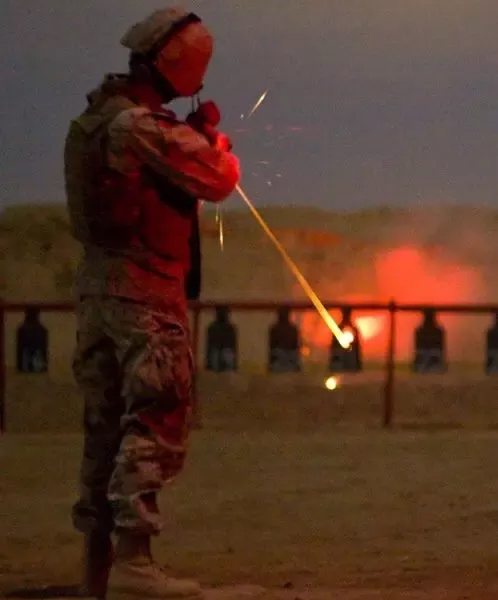
Categories:
The AR-10 rifle, a cornerstone in the world of high-powered guns, is renowned for its accuracy, reliability, and customizable nature. Among its many vital components, the buffer tube stands out as a critical element that plays a significant role in the rifle’s functionality and overall performance. The buffer tube of the AR-10, often overlooked by novice shooters and even some experienced enthusiasts, serves a primary purpose of housing the buffer and spring, two internal parts essential to the gun’s operation.
The buffer and spring work in tandem to absorb and mitigate the recoil generated when a shot is fired. When a round is discharged, the force generated propels the bullet forward and sends a significant shockwave backward through the rifle. This is where the buffer and spring come into play. The buffer, a weighted component, is driven back into the tube by the bolt carrier group, compressing the spring behind it.
The spring, having absorbed the energy, then expands to push the buffer and bolt carrier group forward, readying the gun for the next shot. This process is crucial not only for effective recoil management but also for ensuring the reliability of the semi-automatic cycling of the AR-10.
Quality buffer tubes, therefore, must withstand immense forces and repetitive stress. Manufactured typically from durable materials such as aluminum, these tubes are engineered to provide a balance of strength and lightweight portability. The dimensions and specifications of the buffer tube are precisely calibrated to match the operational demands of the AR-10.
Additionally, the buffer tube serves as the attachment point for the rifle’s stock. This connection adds another layer of stability and comfort for the shooter, allowing for better handling and control of the gun. The design variations of buffer tubes can affect the rifle’s adjustability and stock configurations, catering to the diverse preferences of shooters, from tactical operators to competitive marksmen.
In essence, the buffer tube is a linchpin component that silently and efficiently contributes to the superior performance of the AR-10. Its role in recoil absorption, reliable semi-automatic action, and overall gun stability underscores its importance. Understanding the function and significance of the AR-10 buffer tube provides deeper insight into the meticulous engineering behind this iconic rifle.
The AR-10 buffer tube plays a crucial role in the function and overall performance of the rifle. An essential part of the gun, the buffer tube, also commonly referred to as the receiver extension, houses both the buffer and the buffer spring. These components work together to manage the recoil produced when the rifle is fired, ensuring both the stability of the weapon and the comfort of the user.
When a shot is fired, the force generated propels the bullet out of the barrel, but it also sends a significant amount of recoil back through the rifle. The buffer and buffer spring inside the buffer tube work in tandem to absorb and mitigate this recoil. As the bolt carrier group moves rearward under the force of the expanding gases, it compresses the buffer spring.
This compression creates a counteracting force that slows the rearward motion of the bolt carrier group, absorbs some of the recoils, and eventually pushes the bolt carrier group back into the forward position, chambering the next round. This controlled process prevents the shooter from experiencing the full brunt of the recoil, thereby enhancing accuracy and comfort during rapid or sustained fire.
In addition to recoil management, the buffer tube ensures the reliable cycling of the rifle’s action. By providing a guided path for the bolt carrier group to travel, the buffer tube helps maintain the proper alignment necessary for the gun’s operation. The consistent and smooth cycling resulting from a well-functioning buffer tube and its housed components is critical to reducing the likelihood of malfunctions or jams, thereby promoting the overall reliability of the AR-10.
Moreover, the buffer tube can be a key component in customizing the AR-10 to better fit the user’s needs. Different buffer weights and springs can be installed to fine-tune the recoil characteristics and cycling speed to better match different types of ammunition or shooting styles. This flexibility ensures that the AR-10 can be optimized for a range of applications, from competitive shooting to tactical engagements or hunting.
Essentially, the AR-10 buffer tube is more than just a housing for the buffer and spring; it serves a vital function in recoil absorption, action reliability, and customization potential, contributing significantly to the rifle’s performance and shootability.
The buffer tube of an AR-10 gun is an integral component of the weapon’s operating system. This cylindrical tube extends from the rear of the lower receiver and has a crucial role in housing both the buffer and the recoil spring. These components are vital not only for the automatic functioning of the gun but also for absorbing and mitigating recoil, which improves shooting accuracy and comfort.
Central to the buffer tube assembly is the buffer itself. The buffer is a weighted, cylindrical component that moves back and forth within the tube every time the weapon is fired. It acts as a counterbalance to the bolt carrier group, minimizing the rearward motion generated by the firing process. Constructed from sturdy materials such as aluminum or steel, the buffer’s weight is pivotal to its function.
Different buffers come in varying weights, and choosing the appropriate one can affect the gun’s cycling rate and overall performance. Heavier buffers tend to slow down the cyclic rate, which can be beneficial in reducing the perceived recoil and minimizing wear on the internal components.
The other key component housed within the buffer tube is the recoil spring, often referred to as the action spring. This spring is compressed when the buffer and bolt carrier group move backward upon firing. The energy stored in the compressed spring is then used to push the buffer and bolt carrier group forward, thereby chambering a new round and preparing the gun for its next shot.
The quality and specification of the recoil spring are crucial for reliable function. Springs are typically made from tempered steel and come in various tension ratings to match different ammunition loads and operating conditions.
Together, the buffer and the recoil spring help manage the dynamic forces at play when firing an AR-10. By absorbing and redistributing recoil energy, these components enable smoother operation and more precise control. They also help in protecting the gun’s internal mechanisms from excessive stress and wear, enhancing the longevity and durability of the weapon. The proper functioning of these components is essential for maintaining the gun’s reliability and performance, making the buffer tube an indispensable part of the AR-10’s overall design and functionality.
In the intricate world of guns design, every component plays a critical role in ensuring the weapon’s functionality, reliability, and safety. One such vital component in an AR-10 rifle is the buffer tube. Although it may seem unassuming, the buffer tube is central to recoil management in this gun. Understanding how it works requires a closer look at its mechanics and the interaction with other parts of the rifle.
When a shooter fires an AR-10, the high-pressure gases generated from the ignition of the gunpowder propel the bullet down the barrel and out the muzzle. This rapid release of energy also drives the bolt carrier group (BCG) rearward. If unchecked, the sudden rearward motion could result in excessive recoil, making the rifle difficult to control and negatively impacting accuracy. Here is where the buffer tube comes into play.
Encased within the cylindrical structure of the buffer tube are the buffer and the recoil spring, working together to mitigate the rearward force. As the BCG moves backward, it compresses the recoil spring and pushes the buffer deeper into the buffer tube. The spring, a highly engineered piece of metal, stores kinetic energy during this compression phase. Rather than allowing the bolt to slam into the rear of the receiver, the buffer and spring gradually decelerate the BCG’s rearward motion.
This controlled deceleration reduces the impulse felt by the shooter, effectively softening the recoil.
After compressing the spring, this stored energy is then used to push the buffer and BCG forward again, cycling the rifle for the subsequent shot. This return motion is equally important in recoil management, as it ensures the BCG moves forward in a controlled and reliable manner, chambering the next round without subjecting the gun or shooter to jarring movements.
In summary, the buffer tube in an AR-10 rifle is a critical element designed to house the buffer and recoil spring, which work in tandem to absorb and manage recoil forces. By controlling the rearward and forward motion of the BCG, the buffer tube helps maintain the rifle’s stability and accuracy, ensuring a smoother shooting experience. This sophisticated recoil management system allows the shooter to maintain better control of the gun, enhancing both performance and comfort during operation.
Thus, while it may appear to be just a basic cylindrical housing, the buffer tube is a masterwork of engineering contributing significantly to the overall effectiveness of the AR-10 platform.
The process of installing the buffer and spring into the AR10 buffer tube is a critical step in assembling or maintaining your AR10 rifle. This component setup not only plays a vital role in the overall operation of the gun but also significantly contributes to the management of recoil, ensuring smoother cycling of the bolt and improving overall shooting experience.
To begin, you will need to gather the necessary parts and tools. These include the buffer tube, buffer spring, buffer, castle nut, and buffer tube end plate, as well as an armorer’s wrench and a small punch or similar tool for securing the retaining pin. Before commencing the installation, ensure that the lower receiver is securely clamped to a vice block to prevent any movement that could potentially damage the components or cause injury.
First, take the buffer tube and thread it into the back of the lower receiver. As you begin threading it in, be mindful of the rear takedown pin spring and detent. These small parts need to be captured correctly by the buffer tube as it’s screwed in. Continue threading the buffer tube until it almost reaches the buffer retainer hole.
Next, insert the buffer retaining spring and buffer retaining pin into the designated hole in the lower receiver. Carefully continue threading the buffer tube until it depresses the retaining pin just enough to hold it securely in place without damaging the pin. At this point, the retaining pin should protrude slightly, ready to hold the buffer when it is installed.
With the buffer tube now secure, move on to installing the buffer spring. Slide the buffer spring into the tube, making sure it is properly aligned and seated. Following this, take the buffer and press it into the opening of the buffer tube, compressing the spring slightly. The buffer should be held in place by the buffer retaining pin, which will pop up slightly to lock the buffer into its appropriate position.
Once the buffer and spring are correctly installed, finalize the assembly by securing the buffer tube with the castle nut and buffer tube end plate. Make sure they are snugly tightened using an armorer’s wrench to prevent any play in the buffer tube, which could affect the rifle’s performance. Completing this task ensures that the buffer and spring are securely housed within the buffer tube, ready to help manage recoil and facilitate the cycling process each time the gun is fired.
Proper installation contributes to the reliability and efficiency of your AR10 rifle.
The quality of the buffer tube in an AR-10 rifle is a crucial factor that significantly impacts overall gun performance. Often overlooked by novice gun enthusiasts, the buffer tube serves as the housing for the buffer and spring system, which plays an essential role in absorbing recoil and ensuring the seamless operation of the rifle. A well-crafted buffer tube can enhance the reliability, accuracy, and longevity of the gun, while a subpar one can lead to a host of operational issues.
One of the primary functions of the buffer tube is to provide a smooth pathway for the buffer and spring to mitigate recoil effectively. When a shot is fired, the force generated causes the bolt carrier group to thrust backward. The buffer and spring within the tube absorb much of this force by compressing and then expanding, thus reducing the impact felt by the shooter.
A high-quality buffer tube constructed from durable materials such as 7075-T6 aluminum ensures that the compression and expansion cycles are consistent, which in turn maintains mechanical stability and reduces wear and tear. In addition to absorbing recoil, the buffer tube also influences the cycling of the rifle. Consistent cycling is critical for the rifle’s operation, as it ensures the bolt carrier group returns to its forward position to chamber the next round.
A buffer tube with exact tolerances ensures that the buffer and spring cycle smoothly with minimal friction. Any irregularities or imperfections in the buffer tube can lead to malfunctions, such as failure to feed or ejection issues, which can compromise the reliability of the gun in critical situations. Furthermore, the quality of the buffer tube has a direct effect on the accuracy of the gun.
Recoil management is a key aspect of maintaining point-of-aim between shots, especially in rapid-fire scenarios. A sturdily built buffer tube that minimizes excessive movement allows the shooter to reacquire their target more efficiently, thereby improving shot placement and overall accuracy. Conversely, a poorly constructed buffer tube can introduce unwanted vibrations and inconsistencies, adversely affecting the shooter’s performance. Lastly, the durability of the buffer tube contributes to the gun’s longevity.
Given the stress and mechanical forces involved in firing an AR-10, a high-quality buffer tube made from resistant materials can withstand extensive use without deforming or breaking. This resilience reduces the need for frequent replacements and maintenance, saving time and resources in the long run. Such reliability is particularly important for military and law enforcement applications, where equipment failure is not an option.
In summary, the quality of the buffer tube in an AR-10 rifle plays a paramount role in ensuring the weapon’s performance, reliability, accuracy, and durability.
Maintaining and troubleshooting the AR-10 buffer tube system is paramount for ensuring the rifle operates smoothly and reliably. The buffer tube, housing the buffer and spring, plays a crucial role in absorbing recoil and ensuring the gun cycles correctly. Regular maintenance and attentive troubleshooting are key to prolonging the life of these components and guaranteeing consistent performance.
Routine maintenance begins with regular cleaning. Given the buffer tube’s exposure to fouling and debris, it is essential to clean the interior to prevent malfunctions. Disassemble the buffer tube by removing the stock and tapping out the rear takedown pin. Carefully slide out the buffer and spring, and use a cleaning rod with a cloth patch soaked in solvent to clean the interior.
This process removes carbon build-up and prevents rusting, which can compromise the integrity of the tube. Once cleaned, a light coat of lubricant should be applied to prevent corrosion and ensure smooth operation of the buffer and spring.
Inspecting the buffer and spring for wear and tear is another critical aspect of maintenance. Over time, the buffer could develop dents or significant wear marks, while the spring might lose its tension, leading to cycling issues. Should either component show signs of damage or wear, replacement is necessary to maintain reliable function. When installing new parts, ensure they are compatible with your specific AR-10 model, as incorrect parts can exacerbate problems instead of solving them.
Troubleshooting common issues with the buffer tube system involves understanding potential symptoms and their underlying causes. Failures to cycle correctly, such as failure to feed or extract and double feeds, often stem from issues within the buffer tube system. Inadequate lubrication, dirt accumulation, or a weakened spring can all contribute to these malfunctions. If you encounter cycling problems, first ensure that the buffer tube and its components are clean and properly lubricated.
If issues persist, examining the buffer and spring for signs of wear or damage is required. Also, consider the possibility of an improperly installed or incompatible buffer tube.
By rigorously maintaining your AR-10 buffer tube system and promptly addressing any issues that arise, you can enhance the reliability and longevity of your gun, ensuring it performs as expected under various conditions.
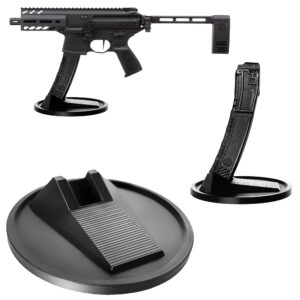
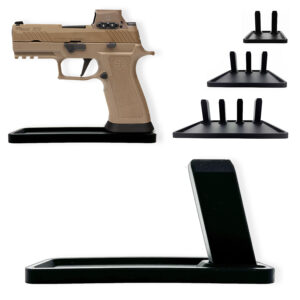
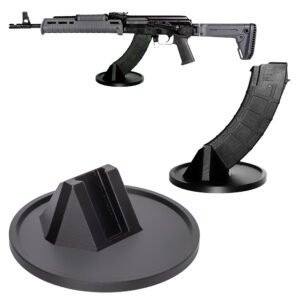
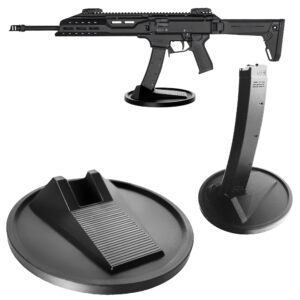




Colt
Colt M4 Carbine
Colt LE6920
Colt AR-15 A4
Daniel Defense
DDM4 V7
DDM4 V9
DDM4 V11
DDM4 ISR (Integrally Suppressed Rifle)
Smith & Wesson (S&W)
M&P15 Sport II
M&P15 Tactical
M&P15T
Bravo Company Manufacturing (BCM)
BCM Recce-16
BCM Recce-14
BCM MCMR Series
Aero Precision
M4E1 Series
AC-15
AR15 Pistol (Various Configurations)
Ruger
Ruger AR-556
Ruger SR-556
Ruger AR-556 MPR (Multi-Purpose Rifle)
Springfield Armory
Saint Victor
Saint Edge
Saint AR-15
PSA (Palmetto State Armory)
PSA PA-15
PSA AR-V
PSA Jakl (AR Pistol)
FN America
FN 15 Tactical Carbine
FN 15 Patrol
FN 15 DMR
Wilson Combat
Recon Tactical
Super Sniper
Protector Carbine
SIG Sauer
SIG M400 Tread
SIG M400 Elite
SIG M400 SDI
LWRC International
IC DI (Direct Impingement)
IC SPR
IC A5
Bushmaster Guns
XM-15 QRC
Bushmaster MOE
XM-15 Patrolman
Rock River Arms
LAR-15 Entry Tactical
LAR-15 Predator
LAR-15 Elite Comp
Stag Arms
Stag 15 Tactical
Stag 15L (Left-Handed Models)
Stag 15 Valkyrie
Noveske Rifleworks
Noveske Gen 4 N4
Noveske Space Invader (AR Pistol)
Noveske Recon
Anderson Manufacturing
AM-15 Optic Ready
AM-15 M4 Carbine
AM-15 Precision Rifle
Adams Arms
AA-15 Piston Rifle
P2 AARS (Adams Arms Rifle Series)
Black Rain Ordnance
SPEC15 Series
BRO Predator
Fallout 15
Diamondback Guns
DB15 Series
DB15CCMLB
DB15EB
Del-Ton Inc.
DTI-15
Del-Ton Echo 316H
Sierra 316M
Windham Weaponry
Windham SRC
Windham VEX-SS
Windham RMCS-4 (Caliber Conversion System)
Christensen Arms
CA-15 G2
CA-15 Recon
CA-15 Titanium Edition
Patriot Ordnance Factory (POF-USA)
Renegade Plus
P415 Edge
Revolution DI
LaRue Tactical
PredatAR
OBR (Optimized Battle Rifle)
LaRue Stealth 2.0
Battle Arms Development
Workhorse Patrol Carbine
BAD556-LW (Lightweight)
Authority Elite Rifle
Faxon Guns
Ascent AR-15
FX-19 (AR Pistol)
Streamline Ultralight Series
KE Arms
KE-15 SLT (Super Lightweight Tactical)
KE-15 Scout Carbine
Primary Weapons Systems (PWS)
MK1 MOD 2-M
MK116 PRO
MK107 (Piston AR Pistol)
ZEV Technologies
ZEV Core Elite Rifle
ZEV AR15 Billet Rifles
Franklin Armory
BFSIII AR-C1
Militia Model
F17-L (Chambered in .17 WSM)
Seekins Precision
SP15 DMR
NX15 Skeletonized Rifle
Havak Bravo
Aero Precision (Additional Models)
EPC-9 (Pistol Caliber ARs)
VG6 AR Rifles
Barrett Guns
REC7 DI
REC7 Gen II
CMMG
MK4 RCE
Resolute 300
Banshee (AR Pistol)
DPMS Panther Arms
Panther Oracle
Panther LR-308
H&K (Heckler & Koch)
HK MR556A1
HK416 (Military Variant)
Rock Island Armory (Armscor)
VR-80 Tactical AR (Shotgun AR Platform)
Troy Industries
Troy SPC-A3
Troy PAR (Pump Action AR)
Wilson Tactical
Tactical Recon AR
Protector Series
F1 Guns
FDR-15 Skeletonized Rifle
BDRx-15 Series
Juggernaut Tactical
JT-15
JT-10 Precision Rifle
AeroSurplus
Surplus AR-15 Rifles (Budget Models)
Thunder Tactical
AR-15 Basic Carbine
Tactical Builder Sets
Radical Guns
RF-15
Forged AR-Series
Dark Storm Industries
DS-15 Featureless Rifles
DS-10 Typhoon
DRD Tactical
Paratus
Aptus AR Rifles
Bear Creek Arsenal
BCA-15
AR Complete Upper Builds
Aero Survival Rifles (ASI)
ASR Tactical Series
Tactical Edge
WARFIGHTER Series
AR-15 Lightweight Rifles
Lone Star Armory
TX15 DMR
TX15 Carbine
HERA Arms
HERA H7
HERA AR-15 Lower Builds
IWI (Israeli Weapon Industries)
Zion-15
DRD Tactical
Tactical Modular Rifles
Quick-Takedown Rifles
V Seven Weapons
1776 Rifle
Hyperlite Rifle
Core Rifle Systems
Core15 Tac III
Core15 Patrol Rifle
Armalite (Original AR-15 Creator)
M15 Tactical
M15 A4 Carbine
DEF15 (Defensive Sporting Rifle Series)
PSA (Palmetto State Armory Additional Models)
PSAK-47 Hybrid (AR-AK Style Hybrid)
PSA Dagger (Pistol Caliber Configurations)
Odin Works
OTR-15
Odin Recon Rifle
Maxim Defense
MDX-508 PDX (Compact AR Pistol)
MDX-510 Rifle